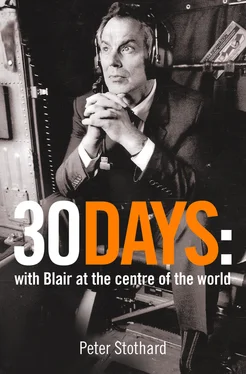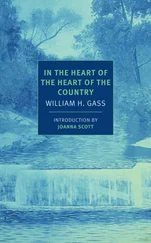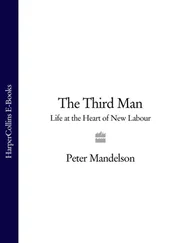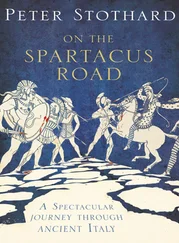Walk through the door marked ‘Number Ten’, go straight ahead down the yellow-wallpapered corridor, avoid the recumbent Henry Moore statue, and you are in the red hall that leads to the Cabinet Room and the den. To the left is Sally Morgan’s political office, decorated with the work of women artists in memory of the one time that Tony Blair freed her to do a job, as Minister for Women, that was not directly in his line of sight.
Morgan is a plain-speaking, plain-dressing, no-nonsense Liverpudlian whom the Prime Minister relies on heavily both for political intelligence and the personal kind. The experiment of setting her free did not last long.
To the right is the passage to the ‘outer office’, which has desks for the private secretaries and Duty Clerks. There is the TV and the three clocks, unchanged since the Cold War, set to Washington, London and Moscow times. Here sit the key-keepers for the red boxes, the men who make the phone-working work, and Jonathan Powell, the Chief of Staff who listens out and listens in.
If you are an Ambassador, if you are seeking diplomacy more than politics, you will go right immediately from the front hall, down a more institutional corridor to rooms behind a combination lock where Tony Blair’s ‘diplomatic knights’ do their work.
In a fine half-circular Georgian room, one knight looks after Chirac and the Europeans. In another, with a huge maple-leaf window out towards Whitehall, sits the chief knight of this current battle, Sir David Manning, who has a slight figure and a fierce stare and cares for what is known here as ‘the real world’: reality includes America, North and South, the Middle East and Iraq.
Political advisers and press officers, party veterans and trusted young civil servants turn left after entering Number Ten, past the staircase to the Blair family’s flat, past the dark lower rooms of the Chancellor of the Exchequer and on to Alastair Campbell’s zone. Here, in a set of large, dark-panelled rooms, the largest hung about with drying marathon kit, steaming trainers and posters of past campaigns, the business of public opinion is done.
There is much to do.
Next month Tony Blair is fifty. How is he planning to spend the day? ‘At the Labour exchange,’ says Campbell with his best four-miles-to-the-finishing-line grimace.
The London Marathon is still a month away. Campbell has never run the twenty-six-mile distance before, and is training as hard as political distractions allow. He has never had his boss in such a bad position before, either.
On the wall is a poster of Number Ten’s last occupant, John Major, in the guise of ‘Mr Weak’, a reminder of one of Campbell’s most vaunted coups. This poster could never have been put on billboards in the 1997 campaign; it was a clear abuse of the copyright owned by the creator of the ‘Mister Men’, children’s bestsellers all over the world. But somehow the image found its way onto newspaper front pages regardless, and it has stayed on this wall ever since.
Tony Blair has not yet reached ‘Mr Weak’ status among his colleagues. But he is beginning to look as grey as John Major did.
The television on the newspaper-strewn table shows a few MPs, some of the more glamorous New Labour kind, cooing with admiration that Tony Blair ‘has put his leadership on the line’. Campbell sighs.
The TV reporter has also found other MPs who want to use the Prime Minister’s support for George Bush to make him greyer and weaker. ‘Leadership isn’t just Tony Blair, it’s us as well,’ says one Old Labour member. Campbell grunts and changes to a sports channel with theatrical contempt.
One group of MPs is rumoured to be planning a bid for a new leader, arguing that a Labour Prime Minister should not be ‘a threat to the institutions of world order’. Is that a real danger, or just a bombastic stunt? Campbell tries to assess the problem and the difference.
The Prime Minister has finished his briefings and has come downstairs. He walks all these corridors restlessly, back and forth along the three ground-floor axes of his home.
It is just after 9 a.m. A large white ‘Délice de France’ food van is parked opposite Horse Guards Parade. A man in a bowler hat, with furled umbrella, yellow carnation and a copy of The Times , swings his arms like a Guardsman as he walks towards the Foreign Office. This archetypal man of Whitehall stops at the sight of the words ‘Délice de France’ and gives them a hard stare, as though to a disobedient dog – or even to ‘a cheap strutting tart’, as another newspaper, not one he is likely to read, describes the President of France this morning. After a moment’s pause, he moves on up past the Cabinet War Rooms of World War II and into Whitehall.
At the same time Tony Blair stops in the Cabinet Room. He looks onto the balcony as though he would much rather be outside than in, and begins the day’s work.
By the front door, a schoolmasterly man in a salt-and-pepper tweed suit and breakfast-stained tie is wondering whether it is safe to go up to the flat. The regular Wednesday routine for the Prime Minister’s team may be Question Time. For this man it is the day for winding the Downing Street clocks.
There is a grandfather in the Entrance Hall which the messengers tell visitors, ‘quite wrongly’, was stripped of its chiming parts by Churchill, who couldn’t stand the noise. There is a ‘nice piece’ in the waiting room. It has an unusually loud tick. But the best one is the ‘Vulliamy’ in the flat, which he likes to wind when the family is out. He also has a good clockwork connoisseur’s interest in the working s of Leo’s train.
‘Set it at five minutes to midnight,’ says another waiting-room visitor, with a confident smile and the current cliché of how close the country is to war. The clock man looks slightly bemused. In five minutes he wants to be away from here, on to the next of the British government’s antique timepieces and then to Buckingham Palace, where there are some ‘Very fine’ examples and he will have ‘elevense s’ with a couple of friends.
At about 11.30 a.m. there is the sound of singing from the cleaners upstairs. The words are ‘Good morning, Tony’, to the tune that fans used to sing outside rock stars’ hotels, and ending ‘Oh, Tony, we love you.’ This noise is accompanied by the sound of mops and brushes and a sharp supervisory retort: ‘You mustn’t call him that. He likes to be called Prime Minister.’
There is a moment’s quiet, and then the ‘Good morning, Tony’ song begins again, just as the man himself almost runs along the corridor, holding a cup and saucer in front of him as though in an egg-and-spoon race. Immediately behind, and in exactly the same posture, is Alastair Campbell.
Tony Blair is not one who seems to mind too much what he is called. Some refer to him as ‘TB’, some as ‘the boss’, many as ‘Tony’. The diplomatic knights call him ‘Prime Minister’, but the phrase ‘Yes, Prime Minister’ has been destroyed by television comedy, and is never used except as a joke.
For the next twenty minutes the Downing Street ‘pagers’ receive blow-by-blow messages from inside the Parliamentary Labour Party meeting about how Jack Straw is faring against the critics. By the time the Prime Ministerial motorcade is ready for the two-hundred-yard ‘dash’ to the Commons, the news is already seen as ‘quite good’. There are ‘lots of dismissals of a Special Conference’, the mechanism necessary to change a Labour leader’, and ‘lots of rudeness about the French’.
At 11.40 a.m. the ‘dash’ has begun. After a blur of journalists’ flashbulbs, protesters’ flashbulbs, gates that are normally kept closed, mirrors in underground tunnels, Tony Blair and his Questions squad reassemble on foot among post-workers and sandwich-makers for the last walk up to the Prime Minister’s Westminster office. Jack Straw is waiting outside, buoyed by the success of his ‘anti-French’ card. He holds out a page of Le Monde as a possible prop for his boss: ‘It’s the Napoleon route – and remember who won.’
Читать дальше












